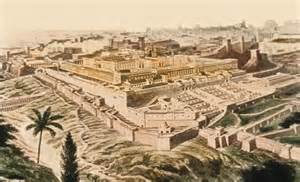For those that think they understand the Middle East, a lesson in historical maps is required. For those that think they understand the Palestinian Authority, for those that think they understand Islam, for those that think they understand treaties, a lesson in historical maps is required.
The lesson begins here.
Rashid Khalidi, a history professor at Columbia University and who has deep connections within the Barack Obama circles and the State Department is quoted here:
“Palestine” did not exist in the Arab imagination before World War I. Local Arabs neither perceived “Palestine” as a distinct country nor themselves as “Palestinians.” Shortly before the birth of the State of Israel Arab historian Philip Hitti acknowledged: “There is no such thing as Palestine in history.”
Palestinian nationalism is deeply embedded in, and derived from, Jewish history in the Land of Israel. Without Zionism as their primary source of inspiration Palestinians would lack a historical narrative of their own. According to Columbia history professor Rashid Khalidi, an expert on Palestinian identity, “Palestine” did not exist in the Arab imagination before World War I. Local Arabs neither perceived “Palestine” as a distinct country nor themselves as “Palestinians.” Shortly before the birth of the State of Israel Arab historian Philip Hitti acknowledged: “There is no such thing as Palestine in history.”
To compensate for their missing past, Palestinians plunder Jewish texts and history, and Zionist nation-building, to frame their own national identity. They claim the Canaanites as their ancestral people. They demand recognition of the burial sites of the biblical patriarchs and matriarchs of the Jewish people as their own holy sites. They frame their naqba as the real “holocaust” that Israel inflicted on them. Copying Israel’s Law of Return (1950), which granted to all Jews the right to settle in their ancient homeland, they insist upon the “right of return” for Palestinian refugees.
According to Palestinian sources, between 800,000-900,000 Arabs were forced to abandon their homes during the fighting in 1946-48. Many left of their own volition to escape the turmoil; others because their leaders urged them to do so, assuring their return once the Zionist enemy was defeated. Israeli historians claim that the number was closer to 600,000-700,000, while Efraim Karsh concludes, based on his extensive research in Palestinian and Israeli sources, that between 583,000-609,000 Palestinians became refugees.
But who is a “refugee”? As originally defined by the United Nations, refugees were “persons whose normal place of residence was Palestine during the period 1 June 1946 to 15 May 1948, and who lost both homes and means of livelihood as a result of the 1948 conflict.” Fair enough. But according to best current estimates, only 30,000-40,000 of those displaced persons are alive to legitimately claim “refugee” status. They could easily be permitted to return to their homeland without undue demographic disruption for Israel. The Palestinian refugee problem would be instantly solved.
Not so fast. To stoke Palestinian claims against Israel the United Nations Relief and Works Administration (UNRWA), established in 1949, expanded its definition of “refugees” to include “descendants” of refugees. Only Palestinian refugees are so defined. With that alteration, five million children, grandchildren and great-grandchildren of the original refugees now claim refugee status even if they never spent a day in Palestine. It is estimated that by 2050 there will be 15 million Palestinian “refugees.” Only Palestinians embrace perpetual refugee status. If this sounds like a formula designed for the demographic destruction of Israel, it is.
The Palestinian Authority seems to care little about its own “refugees.” Thousands are still confined to camps in Jericho, under Palestinian Authority rule since 1994. According to former Palestinian negotiator Saeb Erekat, they live in “miserable conditions.” The Palestinian Authority needs suffering refugees to nourish its narrative of Israeli oppression.
But Palestinian “refugees,” few in actual number if many in anti-Israel rhetoric, now confront a serious challenge to their victimization supremacy: they are vastly outnumbered by actual refugees from Syria. According to the United Nations High Commission on Refugees (UNHCR), more than 2.6 million Syrians, whose primary places of refuge are the neighboring countries of Lebanon, Jordan and Turkey, now qualify for refugee assistance. Collectively, they comprise the world’s largest refugee population.
More people have already been killed in the Syrian civil war than in all the Arab-Israeli wars and Palestinian intifadas combined. Even if they were still alive, the estimated one million Palestinian refugees from Israel’s Independence and Six-Day wars would not reach even half the number of current Syrian refugees. What that says about the vile double standard that Israel confronts in the international community, where it is relentlessly castigated, boycotted and sanctioned for causing and ignoring the plight of Palestinian refugees while Syrian refugees are ignored, is self-evident.
Jerold S. Auerbach is author of the recently published Jewish State Pariah Nation: Israel and the Dilemmas of Legitimacy (Quid Pro Books)

